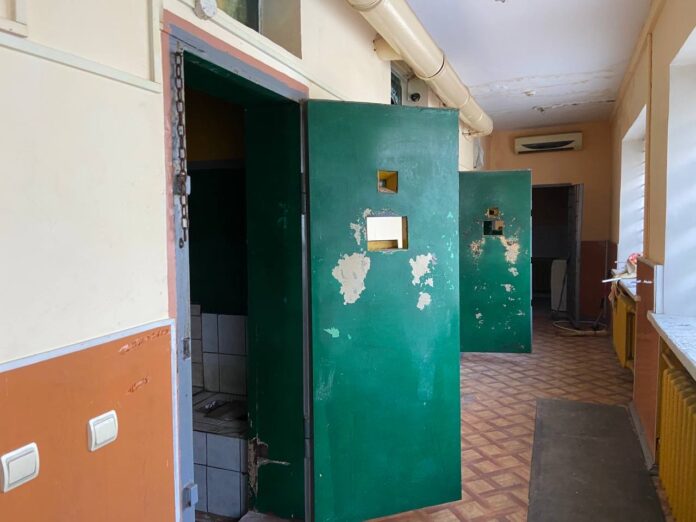BALAKLIYA, Ukraine — On Aug. 3, Russian soldiers came to Oleksander Loboda’s fire station, put a bag over his head and took him and three co-workers away in handcuffs.
“They told us to forget that we have a life, that we no longer exist, that our life is over,” said the resident of Balakliya, one of a swath of towns recently wrested from Russian control.
During three interrogation sessions, Loboda said he was beaten with a plastic baton and shocked with electricity as the occupiers accused him of passing information to the Ukrainian military.
Read more:
In Ukraine’s liberated eastern villages, growing evidence of executions by Russian forces
Oleksander Loboda describes torture by Russian authorities in Balaklia, Ukraine.
Anna Vlasenko/Global News
The three-storey police building in the centre of Balakliya was the site of one of more than 20 alleged torture facilities identified since Russian forces were pushed out of Ukraine’s eastern Kharkiv region.
Russian forces used the sites to hold those they thought were linked to the police and military, said Dmytro Shevchuk, deputy of the Department of Investigation of Crimes Committed in Armed Conflict.
He said he was so shocked by how detainees were treated, he found it difficult to put it into words. “They are civilians, peaceful citizens who just live in the city,” Shevchuk said of the victims.
Ukrainian authorities say the torture facilities have been found across the occupied areas: in cities such as Balakliya, Izyum, and Kupiansk, and in villages such as Kozacha Lopan, Ohirtsi and Lyptsi.
Though the numbers held at the ghastly prisons in Kharkiv region remain unknown, investigators have been interviewing victims as the Ukrainian offensive has made it possible.
Their accounts of mistreatment are the latest evidence the forces of President Vladimir Putin have routinely used torture as part of their attempt to seize neighbouring Ukraine.
More Russians flee country as Putin drafts farmers into military
In Balakliya, a city of about 26,000 located between Kharkiv and Izyum that has survived Nazi and now Russian occupation, interrogations were conducted in two first-floor rooms.
“They asked how my health is and touched me three or four times with a stun gun to my knee and shoulder,” recalled Oleksii Yakovliev, who was also detained at the alleged torture centre.
“And then proposed that I talk with them.”
Yakovliev said the Russians pick him up for having a Ukrainian flag on his property. Oddly, some of the Russian interrogators wore brown hockey masks.
Trending Stories
School board aware of possible protests over Oakville teacher’s attire as dress code under review
Canada dropping travel mask mandates draws ire: ‘Now is not the time’
Around 40 people were held in the prison at any time, he added. Their families brought them clothing, medicine and cigarettes. Some were released following interrogation and were replaced by others.



